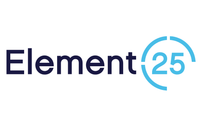Minco Moving Towards Canadian Manganese Production
Canada doesn’t currently produce any manganese, but Minco, which recently released a PEA for its Woodstock project, is looking to change that.
Mention Canada and manganese in the same sentence and you’re likely to get a blank look. The country produces no manganese, according to 2014 statistics from the US Geological Survey, and it’s tough to find information on the country’s reserves of the metal.
That said, the northern nation does have a history of manganese production. A report from the province of New Brunswick’s Minerals and Petroleum Division states that in the past Canada has “supported small mines of low- to medium-grade manganese ore,” while “[m]ore recently, sizeable manganese deposits have been delineated.”
Unfortunately, those deposits have received little attention for two main reasons. “First,” the report states, “the manganese in some deposits is not economically recoverable using available separation procedures.” And second, “metallurgists have not yet developed cost-effective ways to concentrate the lower grade manganese ores of Canada … into the high-grade material required for steel applications.”
Enter Minco
That may sound bleak, but not every company believes manganese in Canada is a lost cause. Minco (LSE:MIO), for one, just released a preliminary economic assessment (PEA) for its New Brunswick-based Woodstock electrolytic manganese project, and by the looks of it, the problems described by the report won’t be an issue.
Completed by Tetra Tech and Thibault & Associates, the PEA indicates that pre-tax, the project has a net present value of C$846 million at an 8-percent discount rate and an internal rate of return of 17.97 percent with a 5.56-year payback. Those numbers are based on a 3,000-tonne-per-day open-pit mining, hydrometallurgical and electrowinning operation. Woodstock’s pre-production CAPEX sits at $864 million.
In terms of production, the PEA pegs the project’s average annual payable output at about 80,000 tonnes of electrolytic manganese metal (EMM) and just over 23,000 tonnes of 62-percent iron ore fines. It is expected to operate for 40 years — for the first 13 of those years, production will come from open-pit mining, after which it will come from stockpiles.
Significantly, Minco describes the material Woodstock will be producing as high grade, dispelling the concern that Canadian manganese is too low grade to be any good.
However, what Minco seems most pleased about is the fact that Woodstock’s operating costs are “anticipated to be the lowest in the world.” They will average US$0.64 per pound for the first 20 years and then $0.68 for the years that follow. As John Kearney, the company’s chairman, said, “I am particularly pleased that Woodstock holds great promise to emerge as potentially the lowest cost EMM producer in the world.”
That news dispels the report’s second concern — that Canadian manganese is not economically recoverable. It’s also positive, Minco states, because it means that the company will be able to compete with China, where 98 percent of the world’s EMM is produced. In that country, EMM is produced for an average of $0.91 per pound; the lowest Chinese production price is about $0.81 per pound.
Explaining how that’s possible, Minco states that Woodstock’s low operating costs “are attributed in large part to the amenability of the Woodstock Plymouth deposit to low cost open pit mining methods with low stripping ratios and relatively low industrial electricity rates in New Brunswick that are sustainable for the duration of the project.”
In China — and in South Africa, where EMM is also produced — the opposite is the case. “[M]ining, electricity, labour and environmental costs” there are on the rise, while grade is on the decline. Thus, Minco believes it’s justified in “expect[ing] that Woodstock’s product will become increasingly competitive in the global EMM market.”
Risks remain
Minco creates a compelling case for the Woodstock project, but of course risks do remain. A couple fairly standard ones that the company identifies are:
- Woodstock’s earning potential is “sensitive to the total revenue and therefore to commodity pricing” — specifically the market price of EMM. As of March 2014, that sat at C$1.27 per pound, or US$1.15 per pound.
- The PEA is based on “Inferred Mineral Resources, which are not Mineral Reserves and do not have demonstrated economic viability.” That means there’s no guarantee that the scenario laid out in the PEA will ultimately come to pass.
Despite those uncertainties, Minco certainly seems to be a company worth keeping an eye on moving forward. No word yet, however, on what its next steps at Woodstock will be.
Shares of Minco were selling for as high as $4.85 each following the release of the PEA. At close of day Friday they sat at $2.34.
Securities Disclosure: I, Charlotte McLeod, hold no direct investment interest in any company mentioned in this article.


